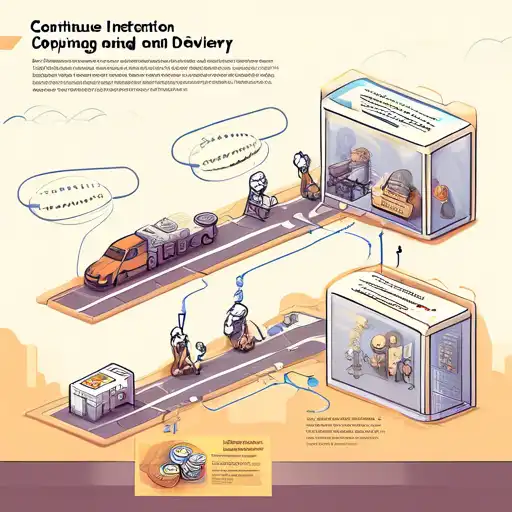What is Continuous Integration and Delivery?
Continuous Integration (CI) and Continuous Delivery (CD) are pivotal practices in modern software development, aimed at improving the efficiency and reliability of software releases. By automating the integration and delivery processes, teams can detect issues early, reduce manual errors, and accelerate the time to market.
The Core Principles of CI/CD
At the heart of CI/CD are several core principles designed to streamline development workflows:
- Automated Testing: Every change is automatically tested to ensure it doesn't break the build.
- Frequent Code Commits: Developers integrate code into a shared repository several times a day.
- Immediate Feedback: Teams receive immediate feedback on the health of their application.
- Deployability: Any version of the software can be deployed at any time.
Benefits of Implementing CI/CD
Adopting CI/CD practices offers numerous benefits, including:
- Reduced Risk: Early detection of issues minimizes the risk of last-minute surprises.
- Higher Quality: Automated testing ensures that only high-quality code is deployed.
- Faster Releases: Automation speeds up the release process, enabling more frequent updates.
- Improved Collaboration: CI/CD fosters a culture of shared responsibility among team members.
How to Get Started with CI/CD
Implementing CI/CD requires careful planning and the right tools. Here are some steps to get started:
- Choose a CI/CD tool that fits your team's needs, such as Jenkins, GitLab CI, or CircleCI.
- Set up a version control system to manage your codebase effectively.
- Automate your build and test processes to ensure consistency.
- Monitor your pipelines to identify and address bottlenecks.
Common Challenges and Solutions
While CI/CD can transform your development process, it's not without challenges. Here are some common issues and how to overcome them:
- Resistance to Change: Encourage team buy-in by demonstrating the benefits of CI/CD.
- Complex Configurations: Start small and gradually introduce more complex workflows.
- Flaky Tests: Invest in reliable test suites to avoid false negatives.
For more insights on optimizing your development workflow, check out our guide on Agile Development Practices.
Conclusion
Continuous Integration and Delivery are essential practices for any team looking to improve their software development process. By automating testing and deployment, teams can achieve faster, more reliable releases. Start small, choose the right tools, and continuously iterate on your process to reap the full benefits of CI/CD.
